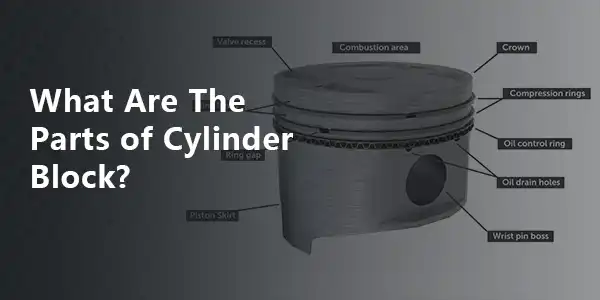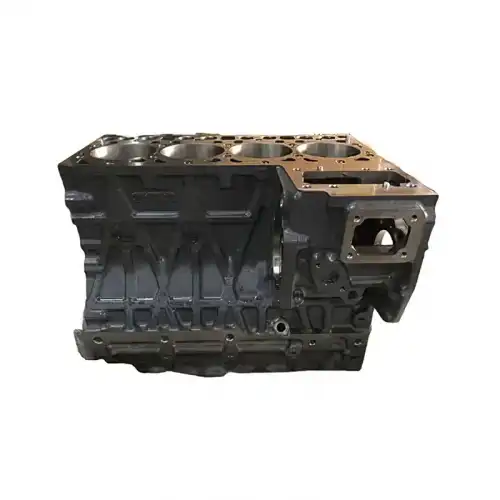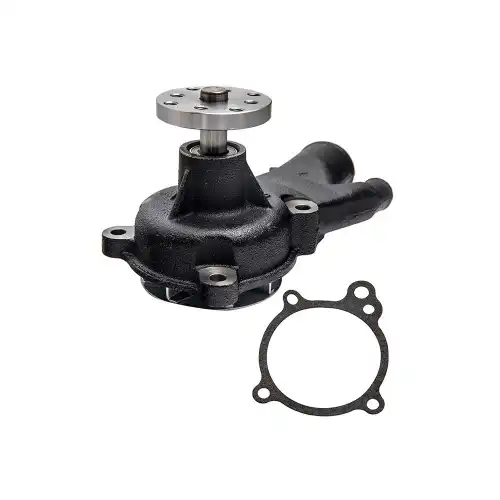What Are The Parts of Cylinder Block?
Engine Block Structure
The engine block is important to the function of the car by supporting the engine components, transferring the heat generated by the engine's friction to the coolant and atmosphere, and supporting the lubrication circuit and auxiliary equipment. Our current cylinder block for sale are suitable for various engineering equipment, such as excavators, trucks, bulldozers, etc.
1. Body group: The parts of an engine block include cylinder head, cylinder block, and oil pan. Some engines divide the cylinder block into upper and lower parts, the upper part is called the cylinder block, and the lower part is the crankcase. The role of the body group is to serve as the assembly base of the various mechanisms and systems of the engine.
A cylinder block’s major components are cylinder head cover, cylinder head, engine block, and oil pan. The block was originally just a piece of metal that held the cylinder bores, water jackets, oil passages, and crankcase. A water jacket is a system of empty channels that circulates coolant within the components of an engine block. The water jacket surrounds the engine's cylinders, usually 4, 6 or 8 cylinders, which contain the pistons. While the cylinder head is affixed to the top of the engine block, the pistons move up and down inside the cylinders, turning the crankshaft, which ultimately drives the wheels. The oil pan sits at the bottom of the engine block and provides an oil reservoir for the oil pump and supplies oil to the oil passages and moving parts.
2. Many parts of itself are components of the crankshaft connecting rod mechanism, gas distribution mechanism, supply system, cooling system, and lubrication system. The cylinder head and the inner wall of the cylinder block together form a part of the combustion chamber, which is a part that withstands high temperature and high pressure.
3. Crank-and-rod mechanism, rod mechanism crank-and-rod mechanism includes piston, connecting rod, crankshaft with flywheel, etc. It is a part that withstands high temperature and high pressure and converts the linear reciprocating motion of the piston into the rotary motion of the crankshaft and outputs power.
The Parts of Cylinder Block
The major parts of a cylinder block includes cylinders, cylinder head, oil passages, water pump, core plugs, crankshaft, crankcase, head studs, oil filter, head gasket, intake and exhaust ports, and head valves.
Engine Cylinder Parts
The cylinders of the engine block, also called a compression cylinder, are considered the most important parts of the engine. It is responsible for the compression of the air-fuel mixture and the power generation of the engine. The engine block has cylindrical bores that consist of pistons that move up and down inside the cylinders. The size and number of cylinders in an engine determine the volume and power generation capacity of the engine. It varies according to the power required and the type of engine.
Engine Cylinder head
The cylinder head sits above the cylinder and forms the top of the combustion process inside the cylinder. It is the upper part of the engine block, which consists of intake manifold, exhaust manifold and coolant passages. Its primary function is the flow of intake and exhaust air-fuel mixture into and out of the cylinder after combustion. Meanwhile, the cylinder head can cool the engine.
Oil Passages
Lubrication is very important for the normal operation and maintenance of the engine. The oil passages and galleries of the engine block are used to supply oil to lubricate the different parts of the engine.
Engine Water Pump
The water pump, also known as a coolant pump, is located at the end of the cylinder head and is driven by a belt that also drives the alternator. It supplies and regulates circulating coolant water to the engine block through the coolant channel to cool the engine.
Core Plugs
The ore plugs acts as a cover for the engine block at the end of the coolant passages. Its function is to stop the coolant water from leaking out of the engine.
Crankshaft
The crankshaft is the rotating part in the engine that causes the movement of the pistons, which translates into strokes. It is connected to a connecting rod where the piston is mounted on the connecting rod. As the crankshaft rotates, it causes the connecting rod to move up and down, which affects the piston and cylinder block.
Crankcase
The crankcase is the housing of the crankshaft. It is mainly located under the cylinder block. Used to avoid crankshaft material contamination. It may also contain a camshaft and an oil pump, depending on the design of the engine.
Head Studs
Head studs are used to withstand high loads to keep the cylinder head seal tightly against the block.
Oil Filter
The oil filter is generally located at the rear end of the engine or under the cylinder block. The job of this filter is to remove as much contaminant as possible before the lubricating oil is recirculated into the engine.
Head Gasket
It is the gasket that sits between the cylinder head and the cylinder block. It acts as a sealant and separates flowing elements in the head and block.
Intake and Exhaust Ports
The air intake is used to channel air into the combustion chamber. The exhaust port is used to remove the gases after the combustion process.
Head Valves
Each cylinder has two valves, the intake valve and the exhaust valve. Its function is to stop or prevent air and fuel from entering the combustion chamber.
Common problems of a cylinder block
Engine external coolant leak
If you have puddles or antifreeze under your engine, this could be from a loose water pump, radiator, heater core or hose, but sometimes it's from the cylinder block itself. A blockage in the cylinder block may crack and start leaking, or a freeze plug may become loose or rusty. A freeze plug can be easily replaced, but cracks are often difficult to repair.
Worn or cracked cylinder
Eventually, after hundreds of thousands of miles, the smooth cylinder walls wear down to the point where the piston ring doesn’t seal well. In rare cases, cracks can develop in the cylinder wall, which will quickly cause the motor to need rebuilding. Worn cylinders can be bored larger for oversized pistons, and in extreme cases (or in aluminum blocks) iron sleeves can be inserted to make the cylinder walls perfect again.
Porous engine block
Voids in castings usually do not cause any problems for a long time due to contaminants entering the metal during the manufacturing process. Eventually, a poorly cast block can begin to seep and leak, either oil or coolant, from the defective area. There's not much you can do about a porous engine block because it's malfunctioning from the day it was formed. Having said that, any leaks that may be caused by the porous block should be minor, and if they show up within the manufacturer's warranty, the engine should be replaced for free.
 Track Your Order
Track Your Order









